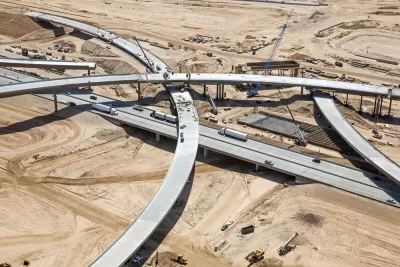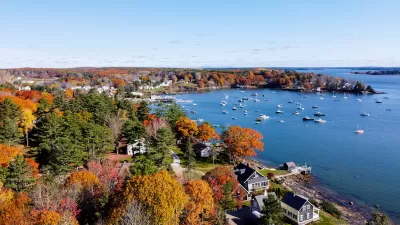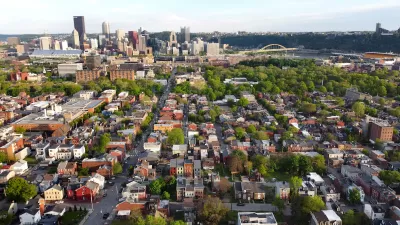Has the smart growth movement succeeded? It depends how you measure "success."

I recently had an email conversation with someone, arguing about whether the smart growth movement has been successful. My correspondent points out that millions of people still are perfectly happy with suburbia, and thus suggests that sprawl is as dominant now as it was in the 1990s. This discussion made me think: how does one define a movement’s success or failure anyhow?
Obviously, the smart growth movement has not been a success if "success" means turning the clock all the way back to pre-sprawl America (say, 1945). But that seems to me like a rather utopian objective. A better question is: have smart growth advocates made progress?
So for example, one smart growth goal might be repopulating older urban cores. For this goal alone, one could define "success" in a variety of different ways. For example:
*Are cities gaining population? The overwhelming majority of large cities have gained population. Of the 30 most populous U.S. cities, only three (Baltimore, Detroit, and Chicago) have lost population since 2000. Even some cities that lost population in the late 20th century (such as Boston and Philadelphia) are gaining population again. On the other hand, this trend is not universal: in slow-growth metro areas such as Cleveland and Buffalo, central cities continue to shed people.
*Are neighborhoods closest to downtown gaining population? Although most American cities are gaining people, new development is often concentrated in cities’ less-developed, suburban sections—especially in Sun Belt cities that encompass hundreds of square miles. One way to control for this variable is to focus on population within a few miles of downtown—the traditional "urban core." A University of Virginia study shows in that the closest ring of neighborhoods (less than a mile out) in the 50 largest metropolitan areas, population grew from 1.306 million in 1990 to 1.444 million in 2012—about a 10 percent increase. Population grew in most other close-in rings: for example, in neighborhoods six miles out (roughly the distance from downtown to the city limits in many cities) population grew from 6.4 million to 7 million. In other words, urban areas are growing again.
*Are city neighborhoods gaining people who can afford to live elsewhere? If the return to the cities was driven by people who could not afford suburbia, cities’ population gains might seem less impressive. However, by and large urban cores are growing more affluent. The Virginia study shows that per-capita income has increased more impressively in downtowns (by $12,000 between 1990 and 2012) and has also increased in every ring up to seven miles out. Between that point and 25 or so miles out, incomes declined between 1990 and 2012, and increased again in the outermost suburbs. Poverty rates are still highest in downtown, but have declined within a mile of so of downtown while increasing in every further-out ring of neighborhoods.
*Are cities gaining population as fast as suburbs? If this is the test of success, the smart growth movement is less successful. As noted above, neighborhoods closest to downtown grew by about ten percent—but the ring of places 25 miles out grew by about 40 percent (from 2.2 million in 1990 to 3.1 million in 2012). In other words, in the late 20th century, most cities were declining. Today, the most common pattern is for the central city to grow but for the suburbs to grow a little faster.
Compared to the 1980s, this pattern is definitely progress from a smart growth perspective—but still is not quite ideal. From my somewhat libertarian perspective, I am heartened: city living still isn't right for everyone, but it is, I think, a feasible alternative for more Americans than it was 20 years ago.

Alabama: Trump Terminates Settlements for Black Communities Harmed By Raw Sewage
Trump deemed the landmark civil rights agreement “illegal DEI and environmental justice policy.”

Planetizen Federal Action Tracker
A weekly monitor of how Trump’s orders and actions are impacting planners and planning in America.

The 120 Year Old Tiny Home Villages That Sheltered San Francisco’s Earthquake Refugees
More than a century ago, San Francisco mobilized to house thousands of residents displaced by the 1906 earthquake. Could their strategy offer a model for the present?

Ken Jennings Launches Transit Web Series
The Jeopardy champ wants you to ride public transit.

BLM To Rescind Public Lands Rule
The change will downgrade conservation, once again putting federal land at risk for mining and other extractive uses.

Indy Neighborhood Group Builds Temporary Multi-Use Path
Community members, aided in part by funding from the city, repurposed a vehicle lane to create a protected bike and pedestrian path for the summer season.
Urban Design for Planners 1: Software Tools
This six-course series explores essential urban design concepts using open source software and equips planners with the tools they need to participate fully in the urban design process.
Planning for Universal Design
Learn the tools for implementing Universal Design in planning regulations.
Clanton & Associates, Inc.
Jessamine County Fiscal Court
Institute for Housing and Urban Development Studies (IHS)
City of Grandview
Harvard GSD Executive Education
Toledo-Lucas County Plan Commissions
Salt Lake City
NYU Wagner Graduate School of Public Service






























